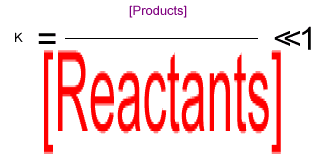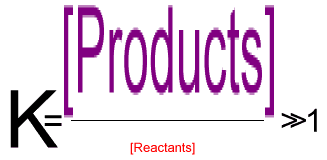 |
Temperature is the only factor for a reaction that can change the numerical value of K. Earlier we showed that you could use le Châtelier's principle to predict the effect of temperature on a reaction. This same idea can be used to understand how temperature will change the value of K.
 |
Suppose that we have an imaginary reaction that is exothermic:
R ![]() P + energy
P + energy
le Châtelier's principle allows us to predict that if the temperature increases, then
the reaction will shift to the left – in other words, the concentration of R will
increase, while P will decrease. This means that K will decrease.
For an exothermic reaction, an increase in temperature will cause a decrease in the value of K |
 |
Now consider an endothermic reaction:
R + energy ![]() P
P
This time, for a temperature increase, le Châtelier's principle predicts
the reactants will decrease, while the products will increase. This will increase
the value of K.
For an endothermic reaction, an increase in temperature will cause an increase in the value of K |
The Clausius - Clapeyron equation gives the quantitative relationship between temperature and the value of K.